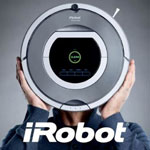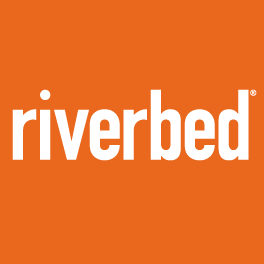BLOG
PetMed Express (NASDAQ: PETS): In Need of a House Call?
 PetMed’s most recent financial results for the quarter ended March 31 were essentially in line with our revenue estimate of $50 million, as sales grew by three percent over the prior year. The company’s average order size grew by five percent over the prior year to $81, as a result of customers increasing the dosages for their pets in advance of the flea and tick season. At the same time we noted that the company added 10,000 fewer customers than during the same quarter in the prior year. And despite recording a higher percentage of sales from higher margin prescription drugs, the company’s gross margin deteriorated by 200 basis points to 33.9, due to price competition in OTC medications, a category that still accounts for an estimated 40 percent of sales.
PetMed’s most recent financial results for the quarter ended March 31 were essentially in line with our revenue estimate of $50 million, as sales grew by three percent over the prior year. The company’s average order size grew by five percent over the prior year to $81, as a result of customers increasing the dosages for their pets in advance of the flea and tick season. At the same time we noted that the company added 10,000 fewer customers than during the same quarter in the prior year. And despite recording a higher percentage of sales from higher margin prescription drugs, the company’s gross margin deteriorated by 200 basis points to 33.9, due to price competition in OTC medications, a category that still accounts for an estimated 40 percent of sales.
PetMeds had recently been benefitting from a favorable trend away from OTC topical medications to prescription pills, which are easier to administer, and do not require the task of bathing a pet in an ointment that can wash off easily. In contrast to topicals, pills require a veterinarian’s prescription and are typically higher priced and carry better gross margins than OTC products. During the last fiscal year sales from prescription medication rose from 44 percent to 50 percent.
At the same time, OTC medications as a percentage of sales remained fairly constant, and until this most recent quarter, we surmise, margins had been holding up as well. However, the large number of brick and mortar and internet providers of OTC medications have evidently been cutting prices, and thus PetMeds’ margins were hurt. We do not see any reason why margins would rebound in the current or subsequent quarters.
Supplier Concentration
PetMeds offers over 3,000 skus for sale to its customers, however a “significant” percentage of sales come from just 100 skus. Moreover about 50 percent of PetMeds’ sales come from just four suppliers. At the same time, PetMeds is trying to increase its direct relationships with drug manufacturers, many of whom require PetMeds to purchase their products from distributors. These supplier dynamics are not new, yet they illustrate the challenge that PetMed faces in increasing gross margins.
The animal health business is becoming increasingly concentrated, as many of the world’s largest pharmaceutical companies are seeking to gain market share. These include Merck Animal Health, the Merial division of Sanofi, Elanco, the animal health division of Eli Lilly, which acquired Novartis Animal Health last year in the second largest acquisition in Lilly’s history. Other mega players include Zoetis, and Boehringer Ingelheim. While only a sub-set of PetMed Express’ competitors offer prescription as well as over the counter pet medications, still a large enough number do, including PetSmart, CostCo, Target, and Amazon.com. It is unlikely that PetMed will be able to develop a price or cost advantage, particularly given the clout of its supplier base.
Sales Growth Remains Elusive
Despite ongoing attempts to rekindle sales growth in the last few years, PetMeds continues to face strong competition from brick and mortar and other online sources of pet medication. Rising advertising costs throughout the industry have for whatever reason made PetMeds’ management gun-shy with respect to advertising investments to gain market share. Over the course of the last year management has reduced advertising expenses by seven percent, a decision which we believe has been detrimental to new customer growth. The company’s tight-fisted approach to advertising suggests that sales gains are likely to be minimal. We see no evidence that PetMeds is gaining market share during a period of solid consumer spending.
While the above concerns suggest that a house call very much remains in order, we also believe that the patient is by no means incapable of recovery, as PETS’ core competencies include online distribution, customer service, product knowledge, efficient inventory management, and a 2.5 million-plus pet owner customer base that have purchased at least one product in the last 24 months. We believe the company’s valuation on an EV/sales basis remains compelling at 1.2x our 2015 revenue estimate net of cash. At the same time, price competition continues to plague the company, a condition which will need to be monitored.
Au Revoir Riverbed
 Yesterday morning Thoma Bravo, the Chicago-based private equity investor, in concert with its frequent partner, Teachers’ Private Capital, a department of the Ontario Teachers’ Pension Plan, announced its intent to acquire Riverbed Technology (NASDAQ: RVBD) in an all-cash deal that values RVBD at roughly $3.6 billion, or about three times projected 2015 revenue, net of RVBD’s net $43 million cash position, which includes an estimated $80 million for the sale of its cloud storage business to NetApp (NASDAQ: NTAP).
Yesterday morning Thoma Bravo, the Chicago-based private equity investor, in concert with its frequent partner, Teachers’ Private Capital, a department of the Ontario Teachers’ Pension Plan, announced its intent to acquire Riverbed Technology (NASDAQ: RVBD) in an all-cash deal that values RVBD at roughly $3.6 billion, or about three times projected 2015 revenue, net of RVBD’s net $43 million cash position, which includes an estimated $80 million for the sale of its cloud storage business to NetApp (NASDAQ: NTAP).
While we are disappointed to see Riverbed sell to a private equity investor, rather than a company in the software and appliance segment, we note the expertise that Thoma Bravo has developed in the business software and appliance space, which includes its recent tender offer for Detroit-based Compuware, a $2.5 billion transaction announced less than four months ago, as well as previous acquisitions of SonicWall (subsequently sold to Dell), Blue Coat Systems, and privately-held Crossbeam Solutions.
After pre-announcing a modest shortfall in revenue relative to company guidance in each of the last two quarters, Riverbed also announced that it would undertake a strategic review of its options to maximize shareholder value. That announcement was made against the backdrop of an increasingly activist shareholder, Elliot Management, which has held a near 10 percent stake in the company for more than a year. We perceive the deal to have a high probability of closing, given the all-cash nature of the transaction, its approval by Riverbed’s board, as well as Elliot Management.
Notwithstanding a rather short-lived shareholder value maximization process of less than two months, Riverbed has, in a sense, been for sale unofficially ever since Elliot Management made its first $19 per share offer, back in February. With the ability to execute its recently announced restructuring plan out of the limelight, Riverbed, under the aegis of Thoma Bravo, is well on its way to realizing its complete potential.
WebMD Health: a Precarious Prognosis
 With projected 2014 revenues of $574 million and a market cap. of roughly $1.8 billion, WebMD is a leading provider of ad-driven health-related content. Online ad sales, principally to drug companies, account for 80 percent of sales. WebMD also provides private content portals to 100 companies, which account for the remaining 20 percent of sales. These portals provide information, advice, education, and services that enable employees and health plan members to evaluate healthcare benefits, treatment, and insurance options.
With projected 2014 revenues of $574 million and a market cap. of roughly $1.8 billion, WebMD is a leading provider of ad-driven health-related content. Online ad sales, principally to drug companies, account for 80 percent of sales. WebMD also provides private content portals to 100 companies, which account for the remaining 20 percent of sales. These portals provide information, advice, education, and services that enable employees and health plan members to evaluate healthcare benefits, treatment, and insurance options.
With the assistance of new management in the last couple of years, WebMD rekindled growth in its online business in part by reducing ad pricing and offering more flexible business terms, including ad campaigns of shorter duration, as well as targeting healthy lifestyle consumer advertisers and health insurance sponsors. As a result, WebMD’s online ad business rebounded by 11 percent in 2013, following a precipitous 18 percent decline in 2012.
In the last couple of quarters, however, online ad spending growth has begun to decline, due in part to tougher comparisons against last year’s performance, a greater emphasis on mobile advertising, for which advertisers spend less than on full-fledged PCs and tablets, which offer larger screen sizes, and the ability to gain more metrics on user behavior. Although not a single company accounted for more than 10 percent of ad sales in either 2012 or in 2013, WebMD depends on a concentrated customer base of drug companies, and an unspecified contribution from non-pharma brands in its online ad business. Recent and proposed consolidation in the global pharmaceutical business is likely to increase the company’s customer concentration.
WebMD’s private portal business, in which it provides healthcare related information to employers, employees, and health care services providers, contributed 18 percent of sales in WebMD’s Q3, and grew by 21 percent over the prior year, almost entirely due to the Blue Cross Blue Shield Association Federal Employee Program that the company launched at the beginning of 2014. The five million member program is WebMD’s largest-ever contract in this category, although the margin impact is less clear. We note that WebMD does not disclose the gross or operating margins for the private portal business, making it difficult to assess the financial impact of the transaction. Elsewhere within the business trends are not positive. WebMD had 100 private portal customers as of the end of the end of the third quarter of 2014, down from 113 in the prior year.
Key swing factors for the next 12 months include whether WebMD can (1) maintain and/or grow its share in online ad spending by the drug companies; (2) attract more consumer brands and health plan sponsors to advertise on its websites; (3) achieve margin expansion beyond current levels, while investing in new platforms and programs.
iRobot: Leading the Revolution in Consumer Robots
 iRobot is the dominant provider of home vacuum robots, with an estimated market share exceeding 60 percent around the globe. Since the Roomba began shipping in 2002, iRobot has sold over nine million units, and the category continues to grow, as evidenced by the company’s 15 percent growth rate in consumer robots in the second quarter. The Roomba product line features six models, which range in price (at retail) from $300 to $700. The product features a range of cleaning capabilities, and is sold through a broad range of home retailers, including the most prominent ones in the US. Our recent review of a prominent ecommerce website indicated that iRobot recently held seven of the top eight slots for home robots.
iRobot is the dominant provider of home vacuum robots, with an estimated market share exceeding 60 percent around the globe. Since the Roomba began shipping in 2002, iRobot has sold over nine million units, and the category continues to grow, as evidenced by the company’s 15 percent growth rate in consumer robots in the second quarter. The Roomba product line features six models, which range in price (at retail) from $300 to $700. The product features a range of cleaning capabilities, and is sold through a broad range of home retailers, including the most prominent ones in the US. Our recent review of a prominent ecommerce website indicated that iRobot recently held seven of the top eight slots for home robots.
The Roomba 880, the most recent addition to the home vacuum robot product line, is priced at retail for $700 and demonstrates iRobot’s technology leadership. Utilizing revolutionary aeroforce extractors, essentially “bristleless” brushes, the product removes up to 50 percent more dust, dirt, hair and debris, and has 5x more power than previous Roomba models. The Roomba 880 is the company’s fastest selling vacuum robot model, accounts for more than 25 percent of sales—despite its higher price point relative to other Roomba models—and features higher gross margins than other models.
The Roomba accounts for an estimated 90 percent of iRobot’s consumer product sales. iRobot also sells robots for floor mopping and floor scrubbing. Floor mopping robots, acquired via Mint a couple of years ago, have since been re-branded as the Braava product line. Although these models have generally not been as successful as the Roomba, they are growing. Other home robots include the Looj gutter cleaning robot, and Mirra pool cleaning robot.
Defense and Security Robots May Present New Opportunities
For the first ten years of its corporate history, iRobot focused primarily on robots for defense and security missions, including the PackBot, a tactical mobile robot which rescue workers deployed at the World Trade Center following the September 11, 2001 terrorist attacks. The following year PackBot was deployed with US troops in Afghanistan. In 2004, IRBT began development of a small unmanned ground vehicle, dubbed the SUGV, which has been used in US combat missions in Iraq and Afghanistan. As recently as 2011, defense and security robots accounted for 40 percent of the company’s revenue.
iRobot continues to see lackluster growth in this sector, though visibility appears to be improving. We are forecasting that D&S will contribute roughly seven percent of sales for 2014. Sales to the US DoD account for about half of the D&S business, and other markets include the sale of defense and first responder robots to Canadian, European, Latin American, and Asian governments. Disaster recovery is an important market opportunity, and, as we understand it, the company’s robots are still being used in Japan for post recovery cleanup of its nuclear reactor disaster.
Remote Presence Robots on the Horizon
iRobot is in the earliest stages of pioneering a new market for remote presence robots. Applications have been developed for telemedicine and team collaboration. iRobot’s RP-VITA allows physicians to diagnose patients from remote locations. The product is sold by InTouch Health. The Ava 500 video collaboration market is sold through Cisco Systems’ (NASDAQ: CSCO) reseller channel. Early use cases for the Ava 500 include enterprise team collaboration, where the robot can follow team members from room to room, rather than remaining stationary in a conference room. Other uses include customer briefing centers, clean rooms, corporate training, and manufacturing, for remote shop floor inspection. The new robots appear to be at least a year away from significant customer adoption, though the technology holds much promise for consumer applications.
Competition
iRobot continues to dominate the $250 plus market for consumer robots, through its Roomba, Braava and Mint product lines. We believe this is the largest segment for home robots based on our review of ecommerce data. iRobot has little competition in this market in the US, save for Neato, a privately-held company. Elsewhere, the company faces indigenous competitors, such as Dirt Devil’s Free Time hard floor robot vacuum cleaner in the UK. This robot retails for the equivalent of roughly $130, providing competition at the low end of the market.
About a month ago, Dyson, the large UK based manufacturer of premium upright vacuum cleaners, hand dryers, heaters, and bladeless fans, announced its 360 Eye, its first ever robot vacuum cleaner. The product, which is to be released in Japan in the first quarter of 2015, with no time table yet stated for Europe or the US, is a vision-based robot equipped with a camera, and operates on a lithium ion battery with an unknown charge time. The product allows for remote scheduling via iPhones and Android devices, and will be priced at the retail equivalent of about $1,000 US.
The 360 Eye is evidently the result of a multi-year, multi-million dollar investment by Dyson, a company which had, at one time, been dismissive of the opportunity for home robots. Our view is that the product will no doubt provide iRobot with competition in Japan, which accounts for 20 percent of iRobot’s sales in any given quarter.
Dyson’s 360 Eye will sell at a 25 percent price premium to iRobot’s highest priced robot, and is well more than twice the price of many of iRobot’s models. It remains unclear when the product will reach the US and Europe, though we are sure Dyson has plans to enter these markets. At this time it is unclear whether Dyson has violated any of iRobot’s 300 overseas patents, which do not expire, according to our understanding until at least 2021. iRobot’s models allow for scheduling at various intervals during the day, though it does not yet offer remote scheduling via mobile devices. While it remains unclear whether Dyson’s cyclone suction technology or iRobot’s revolutionary aeroforce extractors will win the day, we expect a spirited battle.
Conclusion
iRobotcontinues to see solid growth from its Roomba line of home vacuum robots, in which it holds a dominant market share. A new version of the Roomba combined with other new and recently introduced home robots underscore the progress the company is making to expand its global footprint. Other consumer robots already on the market and presumably roaming around in its R&D labs also carry potential. The company’s defense and security business remains soft, though it has been down-sized to a near break-even level, and will contribute less than 10 percent of sales. It may yet stage a rebound, which would give the Bedford Massachusetts robotics pioneer two solid legs on which to stand.
Proto Labs: Responding to Customers or Competitors?
 Founded in 1999 and headquartered in Maple Plain, Minnesota, Proto Labs (NYSE: PRLB) is a leading provider of quick-turn custom-manufactured parts. Along with companies that make 3D printers, Proto Labs has helped to spark a renaissance in American manufacturing. With an emphasis on CNC machining and plastic injection molding operations, bolstered by an easy-to-use online platform, Proto Labs delivers custom parts with fast turn around times to customers that need prototypes or limited production runs of key products. Turn around times can range from one to 10 business days, depending on the complexity of the part and the quantity ordered.
Founded in 1999 and headquartered in Maple Plain, Minnesota, Proto Labs (NYSE: PRLB) is a leading provider of quick-turn custom-manufactured parts. Along with companies that make 3D printers, Proto Labs has helped to spark a renaissance in American manufacturing. With an emphasis on CNC machining and plastic injection molding operations, bolstered by an easy-to-use online platform, Proto Labs delivers custom parts with fast turn around times to customers that need prototypes or limited production runs of key products. Turn around times can range from one to 10 business days, depending on the complexity of the part and the quantity ordered.
Proto Labs has become a trusted supplier to its customers, which include manufacturers of medical devices, cars, aerospace, defense, and aviation products, industrial machinery, and consumer products, including electronics. Proto Labs registered a five-year compound annual growth rate of over 25 percent through the end of 2013.
The rapidly falling prices and enhanced capabilities of 3D printers threaten, to some extent, longer term demand for outsourced, quick-turn manufacturing and rapid prototyping services, since customers can make more prototypes in house. And while Proto Labs’ services were once distinct from the prototyping services of Stratasys and 3D Systems, the use case for various services has become blurred. Furthermore, Stratasys and 3D Systems are taking their services businesses more seriously than in the past, as both growth and profit engines.
As a result Proto Labs has abandoned a service positioning exclusively focused on CNC machining and plastic injection molding, and now offers 3D printer prototyping services for both prototypes and limited production runs. Thus, Proto Labs has responded to both customer requests for 3D part production, as well as the increased emphasis that its competition has placed on quick-turn services.
Our view is that Proto Labs continues to serve a large, healthy growing market, but that competitive developments will need to be monitored. Overall we see Proto Labs as a well managed company, with a strong margin profile currently. We see growth ahead for the Minnesota company, though we believe its valuation is fairly rich at this point (roughly 35x fully-taxed 2015 EPS, and 10x 2014 EV/Sales) and may not fully reflect the impact of increased competition.
PetMed Express: an Investor’s Best Friend?
 With annual sales of $233 million and over 2.6 million active customers, Pompano Beach-based PetMed Express (NASDAQ: PETS) is the largest pet pharmacy in America, and a leading online provider of medication, nutrients, and health-related supplies to pet owners and their dogs and cats. Leveraging the trends toward online commerce, an aging pet population, and the impending shift from topical medication to prescription pills, PetMed focuses on the health management needs of its customers’ pets. About 45 percent of sales comes from prescription medication, 45 percent from health-related products, and 10 percent from pet lifestyle products.
With annual sales of $233 million and over 2.6 million active customers, Pompano Beach-based PetMed Express (NASDAQ: PETS) is the largest pet pharmacy in America, and a leading online provider of medication, nutrients, and health-related supplies to pet owners and their dogs and cats. Leveraging the trends toward online commerce, an aging pet population, and the impending shift from topical medication to prescription pills, PetMed focuses on the health management needs of its customers’ pets. About 45 percent of sales comes from prescription medication, 45 percent from health-related products, and 10 percent from pet lifestyle products.
Health-related trends in the pet population mirror trends affecting their owners. These include rising levels of life expectancy, yet greater presence of disease and chronic conditions such as obesity, thyroid, and arthritis. Like their human companions, pets are benefiting from greater awareness of the impact of a nutritional diet.
A key factor impeding PetMed Express’ sales growth over the last couple of years has been the emergence of numerous brick and mortar and online retailers that have expanded their efforts in the pet health category, seizing upon an obvious area of consumer interest. PetMeds’ strengths include the ability to fulfill 80 percent of prescription orders through an online customer care group, at prices that range from 10 to 50 percent below veterinarians’ prescription medication prices. PetMeds boasts an 80 percent one-day turnaround time on orders, and an 80 percent reorder rate among customers. PetMeds’ highly efficient operations yield over $1 million in revenue per employee, which enables it to achieve a 12 percent operating margin, 20 percent higher than PetSmart, its closest publicly-traded peer, despite a dramatically lower sales volume. That said, competition ranks as the number one impediment to PetMeds’ near-term growth.
An experienced management team has been focused on identifying areas of profitable growth for the company, including a greater emphasis on higher margin prescription drugs. Newly introduced creative advertising may help to generate sales to new customers, an area which has been growing at a slower rate in the last year. While the company develops a profitable growth strategy, investors can draw upon a dividend, which has increased steadily over the last several years. Its current yield is 4.4 percent.
PetMeds’ core competencies in online distribution, customer service, efficient inventory management, and advertising, combined with a 2.6 million pet owner active customer base, and solid balance sheet make it an under-valued asset, one which we believe will grow in value over time.
Oculus VR: More than Meets the Eye
 On Tuesday, March 25th, Facebook announced the $2 billion-plus acquisition of Oculus VR. Based in Irvine, CA, and founded in 2012, Oculus has been working to create a mass market virtual reality headset, which can be utilized to enhance the videogame experience. The brainchild of appropriately-named Palmer Luckey, Oculus has already created a successful developer tool kit, replete with a prototype headset, cables, power supplies, software, and lenses, and has sold over 60,000 copies thus far, according to the Wall Street Journal. Prices range from $300 to $350 per tool kit.
On Tuesday, March 25th, Facebook announced the $2 billion-plus acquisition of Oculus VR. Based in Irvine, CA, and founded in 2012, Oculus has been working to create a mass market virtual reality headset, which can be utilized to enhance the videogame experience. The brainchild of appropriately-named Palmer Luckey, Oculus has already created a successful developer tool kit, replete with a prototype headset, cables, power supplies, software, and lenses, and has sold over 60,000 copies thus far, according to the Wall Street Journal. Prices range from $300 to $350 per tool kit.
The strategy seems to be to get the tool kit into developer hands, gain feed-back on the product, and then create a consumer headset, already dubbed the Rift, which will be targeted to the large mass of video game users, four million of whom have purchased the Sony Playstation in the last several months.
The headset will feature ultra stereoscopic 3D rendering, a large field of view, as well as “ultra low latency head tracking,” according to the company’s founder. All of these features are designed to provide a more realistic, immersive, 3D experience than other products on the market, none of which have achieved critical mass. Oculus’ strategy is to provide an extremely affordable yet high quality device, which is already being assisted by breakthroughs in high density displays, and ultra lightweight sensors. Funded by several prestigious VC firms who have provided over $70 million in financing, Oculus is set to ship the second iteration of its software developer tool kit sometime in July.
The $2 billion acquisition includes $400 million in cash, approximately $1.6 billion in stock, and a potential earn out of $300 million, assuming certain milestones are met. Facebook CEO Mark Zuckerberg sees larger plans for the company as a social platform that might include the potential for doctor patient consultation, online learning, virtual vacations, and sporting events. We think it is highly plausible that Oculus caught the attention of other consumer-oriented tech companies, including Microsoft, Google, and Apple, but may have been persuaded that its best chance to develop a mass market device would be to link up with Facebook. No doubt, the company’s VCs had strong thoughts about the valuation. If published reports regarding the sale of 60,000 developer toolkits are true, it seems plausible that Oculus generated over $18 million in revenue in the last year.
John Chen’s Challenge
 As BlackBerry (NASDAQ: BBRY) refines its mission of “pushing the boundaries of mobile experiences,” all eyes will be upon 58 year-old John Chen, who has been named interim CEO.
As BlackBerry (NASDAQ: BBRY) refines its mission of “pushing the boundaries of mobile experiences,” all eyes will be upon 58 year-old John Chen, who has been named interim CEO.
Mr. Chen, who hails from a modest upbringing in Hong Kong, and lived in New England for several years, where he attended the Northfield Mount Herman school on the banks of the Connecticut River, and graduated with a EE from Brown University in 1978. He then headed West to receive his masters in electrical engineering from the California Institute of Technology the following year.
John Chen began his career at Unisys, (the merger of mainframe computer companies Burroughs and Sperry) as a hardware engineer, and later became president and COO at age 38 of Pyramid Technology Corporation, a fast-growing computer company, based in San Jose, California, started by former HP engineers, and a pioneer in Reduced Instruction Set Computing. After Siemens acquired Pyramid and merged it into Siemens Nixdorf, Chen became president and CEO of Siemens Nixdorf’s Open Enterprise Computing Division in 1996.
A year later he joined Sybase, as president and CEO. Sybase, at one time, was the youngest and fastest growing database software company in the world, and a perceived challenger to Oracle for technology leadership. A series of management missteps pertaining to its products and technology, misleading financial statements, and ultimately lost investor credibility, led to a multi-year phase of purgatory—not unlike that experienced by BlackBerry.
This set the stage for a turnaround, which was led by John Chen, after he assumed leadership of the company in 1997. Under his leadership Sybase reemerged as a provider of data warehouse and other analytics software, mobile data management, messaging and virtualization technology. And the company recorded 55 consecutive quarters of profitability. In May of 2010 SAP AG the German enterprise applications software giant acquired Sybase for $5.8 billion, thus filling a gaping hole in its own product line, and better positioning itself as an Oracle competitor.
Among the myriad challenges facing John Chen and the management of Blackberry is what to do with the company’s smart phone and tablet business, which has steadily lost market share to long-standing competitors and up-starts. The company’s software challenges are no less daunting, although the company possesses solid mobile and security assets. Blackberry also benefits from several thousand patents relating to mobile devices, software, and security, and these are sure to be powerful assets in the future.
All in all, John Chen’s challenges exceed those that he faced upon joining Sybase some thirteen years ago. It will be interesting to see whether his interim position is followed by a more permanent one in which he can reestablish the leadership once held by the venerable Canadian company.
Constant Contact Still Flying Below the Radar Screen
 Constant Contact (NASDAQ: CTCT) of Waltham, Massachusetts is the category leader in email marketing software, with a cloud-based subscription software service that helps over 550,000 companies mount effective marketing campaigns, and maintain a continuous line of communication with customers and prospects. Though the company lost focus last year with an over-exuberant thrust into the social media market, Constant Contact, has, in the last several quarters returned to a more disciplined sales approach, and has added over 10,000 gross new customers in each of the last two quarters. We think it highly probable that CTCT will end 2013 with close to 600,000 active customers.
Constant Contact (NASDAQ: CTCT) of Waltham, Massachusetts is the category leader in email marketing software, with a cloud-based subscription software service that helps over 550,000 companies mount effective marketing campaigns, and maintain a continuous line of communication with customers and prospects. Though the company lost focus last year with an over-exuberant thrust into the social media market, Constant Contact, has, in the last several quarters returned to a more disciplined sales approach, and has added over 10,000 gross new customers in each of the last two quarters. We think it highly probable that CTCT will end 2013 with close to 600,000 active customers.
Constant Contact targets more than 20 million small and mid sized businesses in the U.S., as well as non-profits, including trade associations, schools, churches, hospitals and libraries. Constant Contact’s core email marketing product improves the quality and frequency of interaction with customers, constituents, and prospects, while reducing the costs associated with expensive, and often wasteful direct mail.
Three years ago Constant Contact offered only one product, email marketing, but now has six: online surveys, event marketing, social media marketing, local deals, and digital storefronts for small businesses. Each of these products target large addressable markets inside the company’s existing customer base, as well as new segments, which are receptive to the company’s affordable pricing. The new products have thus far been modest revenue contributors, yet signs are pointing in the right direction, as the company has demonstrated that its customer retention rate is 20 percent higher among customers that opt for two or more products, and 40 percent higher among customers who subscribe to three or more products.
CTCT has been slow to address overseas markets, but its products are used in the English language in over 100 countries. We believe the company will have a large addressable market overseas once it begins to roll out foreign language versions of its products.
Constant Contact, despite having made a dilutive acquisition, which cost the company over $65 million in cash, maintains a stellar balance sheet with nearly $100 million in cash, no debt, and negligible receivables. The company anticipates generating over $20 million in free cash flow this year, and not long ago initiated its first-ever share repurchase program, with an authorization for $20 million.
Constant Contact’s improving prospects coincide with a recent acceleration of M&A activity in the marketing automation sector led by Salesforce.com’s purchase of ExactTarget, and Oracle’s recent acquisition of Eloqua. Constant Contact’s large installed base, improving business model, growing portfolio of products, and untapped potential at the mid-range of the email marketing market are among its most alluring attributes, which may yet lift it above, rather than below many investors’ radar screens.
Amazon.com: Streaming for Success
 As part of its mission to provide planet earth with the largest selection of consumer products and services, Amazon.com launched Amazon.com Prime Instant Video in February 2011. The $79 per year annual service, an extension of its Amazon Prime two- day shipping program for all Amazon purchased goods, now features over 36,000 movies and television shows that can be streamed to its customers’ video devices, at no additional cost. In its most recent quarterly letter to shareholders, Netflix, Amazon.com’s most significant streaming competitor, indicated that of its top 200 most popular television shows and movies in the fourth quarter, Amazon.com offered 37 percent of these to its viewers. This overlap has risen from zero two years ago, and is the highest level of overlap among Netflix’s key competitors.
As part of its mission to provide planet earth with the largest selection of consumer products and services, Amazon.com launched Amazon.com Prime Instant Video in February 2011. The $79 per year annual service, an extension of its Amazon Prime two- day shipping program for all Amazon purchased goods, now features over 36,000 movies and television shows that can be streamed to its customers’ video devices, at no additional cost. In its most recent quarterly letter to shareholders, Netflix, Amazon.com’s most significant streaming competitor, indicated that of its top 200 most popular television shows and movies in the fourth quarter, Amazon.com offered 37 percent of these to its viewers. This overlap has risen from zero two years ago, and is the highest level of overlap among Netflix’s key competitors.
Amazon.com. like Netflix, has recently become more interested in proprietary content that can be displayed only to Amazon.com Prime Instant Video customers. Toward that end Amazon.com recently added FX crime drama Justified to its expanding line-up of exclusive content. Amazon has also announced exclusive agreements with PBS for Downton Abbey, and the CBS series Under the Dome, based on the Stephen King novel, and produced by Stephen Spielberg. Through Amazon Studios, an original movie and series production arm of Amazon.com, Amazon currently has 11 min-series in either trial or production mode, including five children’s series, and six comedy pilots. Amazon intends to air the productions on Amazon Instant Video, Prime Instant Video, Lovefilm UK and Germany (an Amazon.com subsidiary), where customers will pay no additional cost to view them. Amazon intends to gather feed-back during the pilot mode to determine further funding.
Amazon.com briefly experimented with a monthly subscription service in November of 2012 in advance of the holiday shopping season, but mysteriously pulled it after two weeks, preferring to keep Amazon Prime an annual, rather than monthly subscription service. A major motivating factor for Amazon.com may have been its desire to avoid getting stuck with a massive shipping bill during its seasonally strong fourth quarter, which ultimately revealed a declining rate of sales growth, which, in turn, has upped the ante on succeeding with its streaming strategy.



